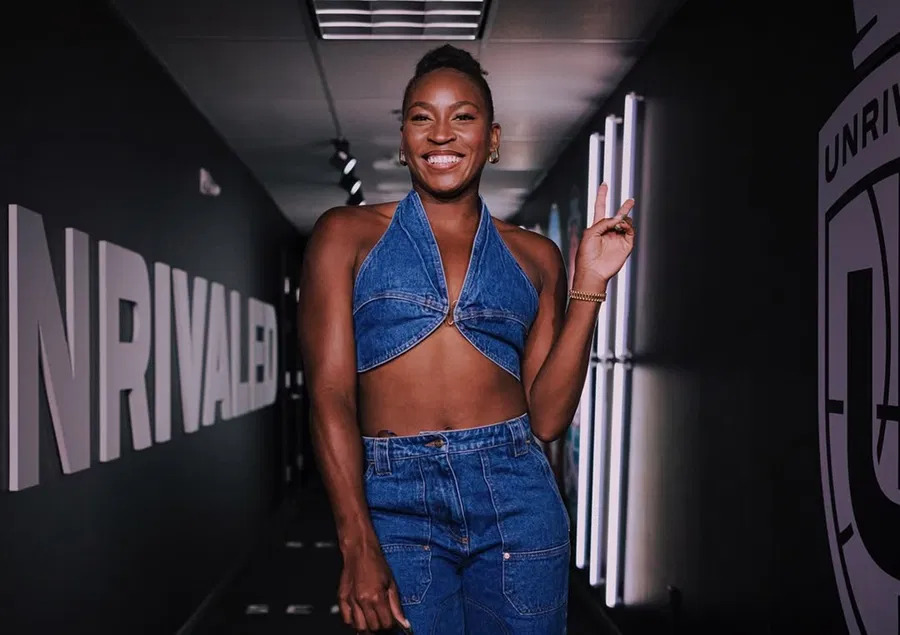
In the fast-paced world of sports marketing, where billion-dollar brands vie for the loyalty of rising stars, a seismic shift has unfolded in the tennis world. Coco Gauff, the 21-year-old American tennis prodigy, has become the centerpiece of a narrative that pits two athletic giants against each other: Nike, the $80 billion behemoth, and New Balance, the underdog carving out a legacy of authenticity. The story isn’t just about a sponsorship deal—it’s about how brands build, or fail to build, a cultural icon. Fans and industry insiders are buzzing with one question: Did Nike miss the mark with Gauff, allowing New Balance to craft a star whose shine transcends the court?
Gauff’s ascent has been meteoric. At 15, she stunned the tennis world by defeating Venus Williams at Wimbledon, signaling the arrival of a generational talent. Now, with a U.S. Open title and a French Open doubles crown under her belt, she’s not just a player—she’s a movement. Her appeal stretches beyond sports, blending athletic prowess with activism and relatability. Yet, as her star rose, whispers grew louder that Nike, her longtime sponsor, wasn’t fully capitalizing on her potential. “They had a diamond in their hands, and they didn’t polish it,” one industry observer remarked, capturing the sentiment that Nike’s approach lacked the personal touch Gauff’s unique story demanded.
Enter New Balance. In a bold move, the Boston-based brand signed Gauff and set about crafting a narrative that feels as organic as it is strategic. Unlike Nike’s one-size-fits-all playbook, New Balance leaned into Gauff’s individuality. They gave her a signature shoe line, the Coco CG1, designed with her input to reflect her vibrant personality—bright colors, sleek lines, and a nod to her South Florida roots. “I wanted something that felt like me, something kids could see themselves in,” Gauff said, emphasizing the collaborative spirit of the partnership. The result? A product that resonates with Gen Z fans who see Gauff as a peer, not just a poster child for a corporate giant.
New Balance didn’t stop at footwear. They positioned Gauff as a cultural force, amplifying her voice on issues like racial justice and mental health. When Gauff spoke at a Black Lives Matter rally in 2020, New Balance didn’t shy away—they celebrated her courage. “We’re not just here to sell shoes; we’re here to support Coco’s vision,” a New Balance executive stated, underscoring their commitment to her off-court impact. This authenticity has paid dividends. Social media platforms are flooded with fans praising the brand for “getting” Gauff in a way Nike never did. Posts on X highlight New Balance’s tailored campaigns, with one user noting, “Nike had her, but New Balance *built* her.”
Nike’s missteps, by contrast, feel glaring in hindsight. Despite Gauff’s global appeal, their campaigns often relegated her to ensemble ads alongside other stars, diluting her standout presence. The brand’s failure to launch a signature product for her left fans wanting more. “Coco’s got that spark—why didn’t they give her a shoe, a line, something?” a fan lamented online. Industry analysts point to Nike’s scale as both a strength and a weakness. With a roster packed with megastars, Gauff’s story may have been lost in the shuffle, a casualty of a machine too big to pivot quickly.
The financial stakes are staggering. Gauff’s marketability, pegged at millions annually, is only climbing as she racks up endorsements from brands like Rolex and Bose. New Balance’s investment—reportedly a multi-year deal with performance bonuses—looks prescient. Their stock has risen, literally and figuratively, with shares up 8% since Gauff’s U.S. Open win. Nike, meanwhile, faces scrutiny for letting a once-in-a-generation talent slip through their fingers. “It’s not just about money—it’s about vision,” an analyst noted. “New Balance saw what Nike didn’t.”
Beyond the dollars, this saga reflects a broader shift in sports marketing. Today’s athletes demand partnerships that reflect their values, not just their stats. Gauff, with her blend of grit and grace, embodies this new era. Her New Balance ads—featuring her laughing with fans or training with her dad—feel like snapshots of a life, not a sales pitch. “I want to inspire the next generation, not just be a face on a billboard,” Gauff said, a mantra New Balance has embraced wholeheartedly.
As Gauff prepares for the 2025 season, the tennis world watches not just her forehand but her brand. New Balance’s gamble has positioned them as architects of an icon, while Nike grapples with a rare fumble. The lesson is clear: in the race to build a star, it’s not enough to sign them—you have to see them. For Gauff, New Balance saw her clearly, and the world is taking notice.
Leave a Reply